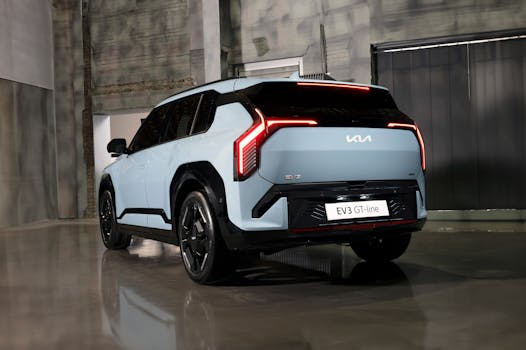Subscription Models Disrupting Car Ownership
The traditional model of car ownership is being shaken up by subscription-based services. These innovative models provide a convenient and cost-effective alternative to purchasing a car, giving consumers the flexibility to use different vehicles for their changing needs. In addition to being more sustainable and reducing financial burden, subscription models also offer a seamless experience with added convenience and a variety of perks. Let’s take a deep dive into how subscription models are disrupting car ownership and revolutionizing the way we think about transportation.
The Rise of Subscription Models
Car ownership has long been the norm for individuals and families. However, with the growing demand for flexibility and convenience, subscription models have emerged as a disruptor in the auto industry. These models offer a monthly fee in exchange for access to a range of vehicles, from sedans to luxury cars, as well as additional benefits like insurance, maintenance, and roadside assistance. This shift towards usage-based rather than ownership-based services is changing the game for both consumers and car manufacturers.
Benefits for Consumers
One of the main advantages of subscription models is the flexibility they offer. Instead of being tied down to a single car, subscribers can switch between vehicles according to their needs and preferences. For instance, an individual might opt for a larger SUV for a road trip, and then switch to a compact car for everyday use. This allows for a more tailored experience, without the commitment and expenses of purchasing a car outright.
Moreover, subscription models are often more cost-effective than owning a car. With a monthly fee that covers all related expenses, subscribers don’t have to worry about additional costs such as insurance, maintenance, and depreciation. This makes it an attractive option for those on a budget, as well as for individuals and families who don’t want to commit to a large purchase.
Benefits for Car Manufacturers
Subscription models are also beneficial for car manufacturers looking to adapt to changing consumer preferences and market demands. With subscription services, manufacturers have a steady stream of revenue, rather than relying on one-off purchases. This can help stabilize their income and mitigate the impact of economic downturns.
Additionally, subscription models allow for better inventory management. Manufacturers can predict demand and produce vehicles accordingly, reducing waste and optimizing their production processes. This also opens up opportunities for manufacturers to introduce new and experimental models without facing the risk of producing a large number of cars that may not sell.
The Subscription Model Landscape
One of the most well-known examples of subscription models disrupting car ownership is the rise of car-sharing services. Companies such as Zipcar and Car2Go offer short-term rentals, typically by the hour, for people who need a car for a particular purpose. These services are especially popular in urban areas where owning a car may not be feasible or necessary.
Another type of subscription model is the all-inclusive subscription, in which subscribers pay a monthly fee for everything from the car itself to insurance and maintenance. Companies like Care by Volvo and Book by Cadillac offer this type of model, providing luxury vehicles and added perks like car washes, concierge services, and even valet parking.
Roadblocks to Mainstream Adoption
While subscription models have gained popularity and are disrupting traditional car ownership, they still face challenges to widespread adoption. One major obstacle is the lack of awareness and education among consumers. Many people are still not aware of subscription-based services and may not understand the benefits they offer. This means that companies offering these services need to invest in marketing and educating consumers to drive adoption.
The pricing structure of subscription models can also be a deterrent. While they may be more cost-effective in the long run, the initial monthly fee may be higher than what people are used to paying for traditional car ownership. Companies need to find a way to make their pricing more attractive and appealing to a broader audience to foster wider adoption.
The Future of Car Ownership
With changing consumer behaviors and technological advancements, traditional models of car ownership are slowly losing their grip. As subscription-based services continue to evolve and improve, more and more people are expected to turn towards this model of car usage. This will not only disrupt the auto industry but also have a significant impact on the environment, with fewer cars being produced and used, resulting in reduced carbon emissions.
In the years to come, we can expect to see more players enter the market, offering new and innovative subscription models that cater to different demographics and market segments. This will continue to drive competition and innovation, ultimately benefiting consumers and pushing the boundaries of what is possible with car ownership.
In conclusion, subscription models are disrupting car ownership by providing an alternative that is more flexible, cost-effective, and convenient. As these models continue to evolve and gain traction, we can expect to see a significant shift in how we think about transportation, paving the way for a more sustainable future for both consumers and manufacturers.










